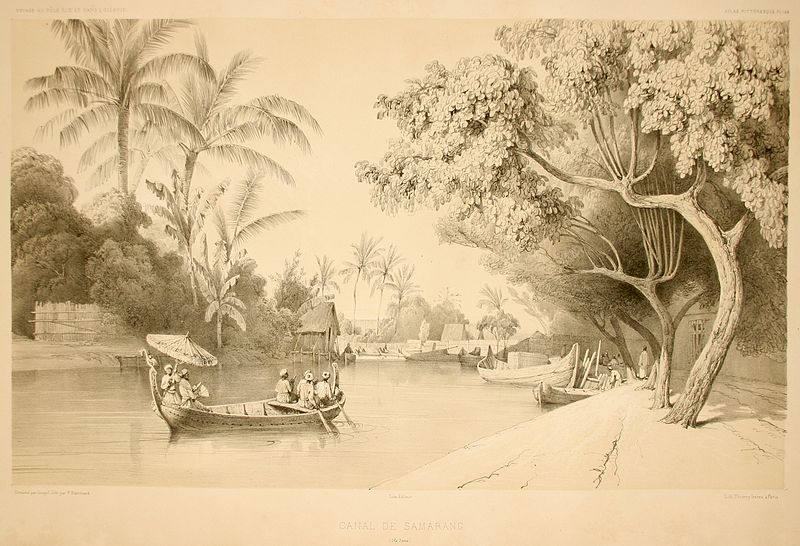Semarang's history dates back to the ninth century, when it was known as Bergota. By the end of fifteenth century, a Javanese Islamic missionary from nearby Sultanate of Demak with the name of Kyai Pandan Arang founded a village and an Islamic boarding school in this place. On May 1, 1547, after consulting Sunan Kalijaga, Sultan Hadiwijaya of Pajang declared Kyai Pandan Arang the first bupati (regent) of Semarang, thus culturally and politically, on this day Semarang was born.
In 1678, Sunan Amangkurat II promised to give control of Semarang to the Dutch East India Company (VOC) as a part of a debt payment. In 1682, the Semarang state was founded by the Dutch colonial power. On October 5, 1705 after years of occupations, Semarang officially became a VOC city when Susuhunan Pakubuwono I made a deal to give extensive trade rights to the VOC in exchange of wiping out Mataram's debt. The VOC, and later, the Dutch East Indies government, established tobacco plantations in the region and built roads and railroads, making Semarang an important colonial trading centre.

NIS company head office, Semarang, Dutch East Indies, 1901.
In the 1920s, the city became a center of leftist and nationalist activism. With the founding of the Communist Party of Indonesia in the city, Semarang became known as the "Red City". The Japanese military occupied the city along with the rest of Java in 1942, during Pacific War of World War II. During that time, Semarang was headed by a military governor called a Shiko, and two vice governors known as Fuku Shiko. One of the vice governors was appointed from Japan, and the other was chosen from the local population.
After Indonesian independence in 1945, Semarang became the capital of Central Java province.
Administration
The city of Semarang divided into 16 districts (kecamatan) and 177 sub-districts of (kelurahan). The 16 districts are: West Semarang, East Semarang, Central Semarang, North Semarang, South Semarang, Candisari, Gajahmungkur, Gayamsari, Pedurungan, Genuk, Tembalang, Banyumanik, Gunungpati, Mijen, Ngaliyan, and Tugu.A Bupati (regent) used to be the head of government in Semarang until 1906. After 1906, the city of Semarang was headed by a Mayor (Walikota).
Mayors of Semarang after Indonesian independence:
- Moch. lchsan
- Koesoebiyono (1949 - 1 July 1951)
- RM Hadisoebeno Sosrowardoyo (1 July 1951 - 1 January 1958)
- Abdulmadjid Djojoadiningrat (7 January 1958 - 1 January 1960)
- RM Soebagyono Tjondrokoesoemo (1 January 1961 - 26 April 1964)
- Wuryanto (25 April 1964 - 1 September 1966)
- Soeparno (1 September 1966 - 6 March 1967)
- R. Warsito Soegiarto (6 March 1967 - 2 January 1973)
- Hadijanto (2 January 1973 - 15 January 1980)
- Imam Soeparto Tjakrajoeda (15 January 1980 - 19 January 1990)
- Soetrisno Suharto (19 January 1990 - 19 January 2000)
- Sukawi Sutarip (19 January 2000 – 19 January 2010)
- Soemarmo HS (19 January 2010 - present)
copied from wikipedia








0 komentar:
Posting Komentar